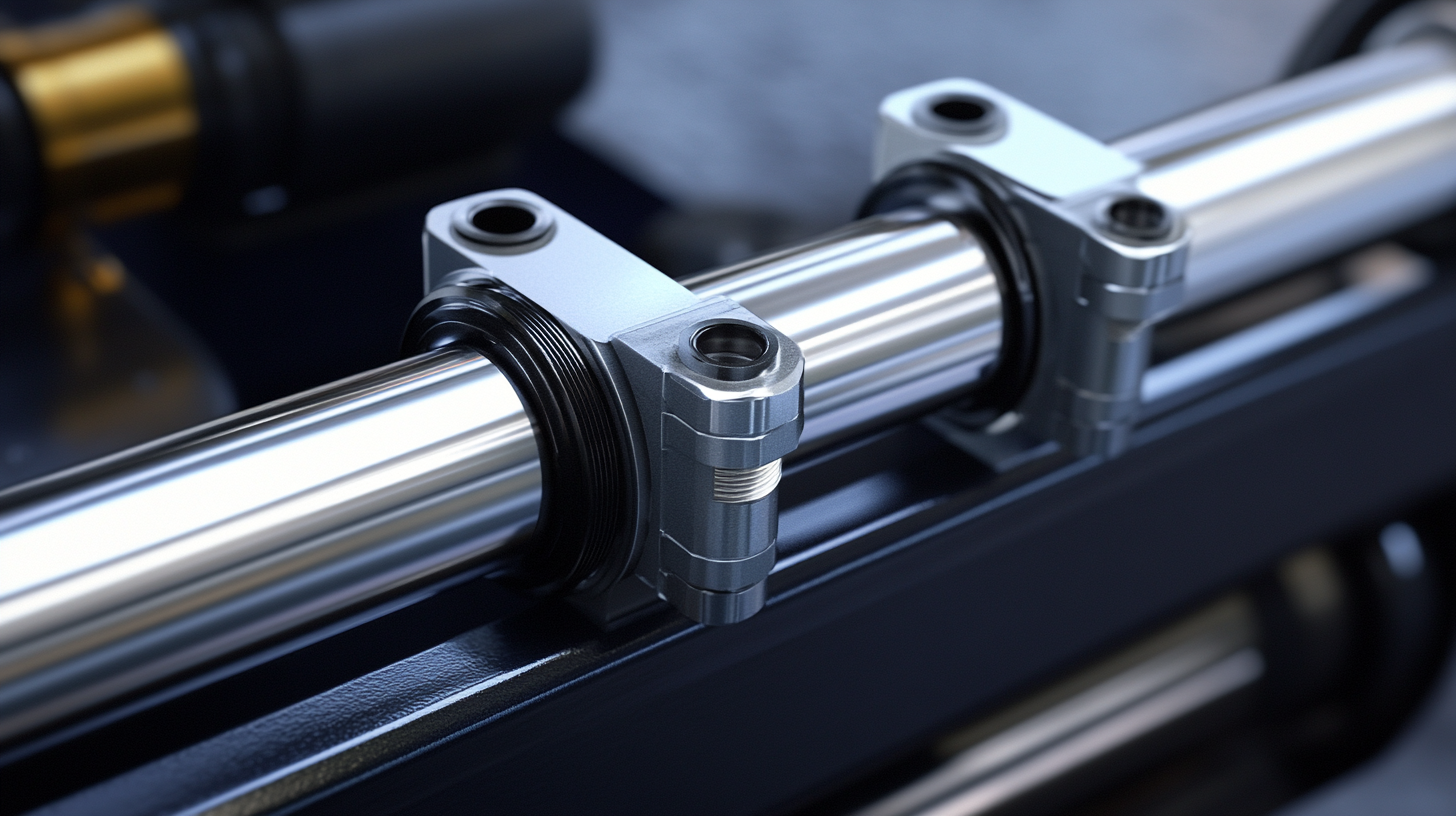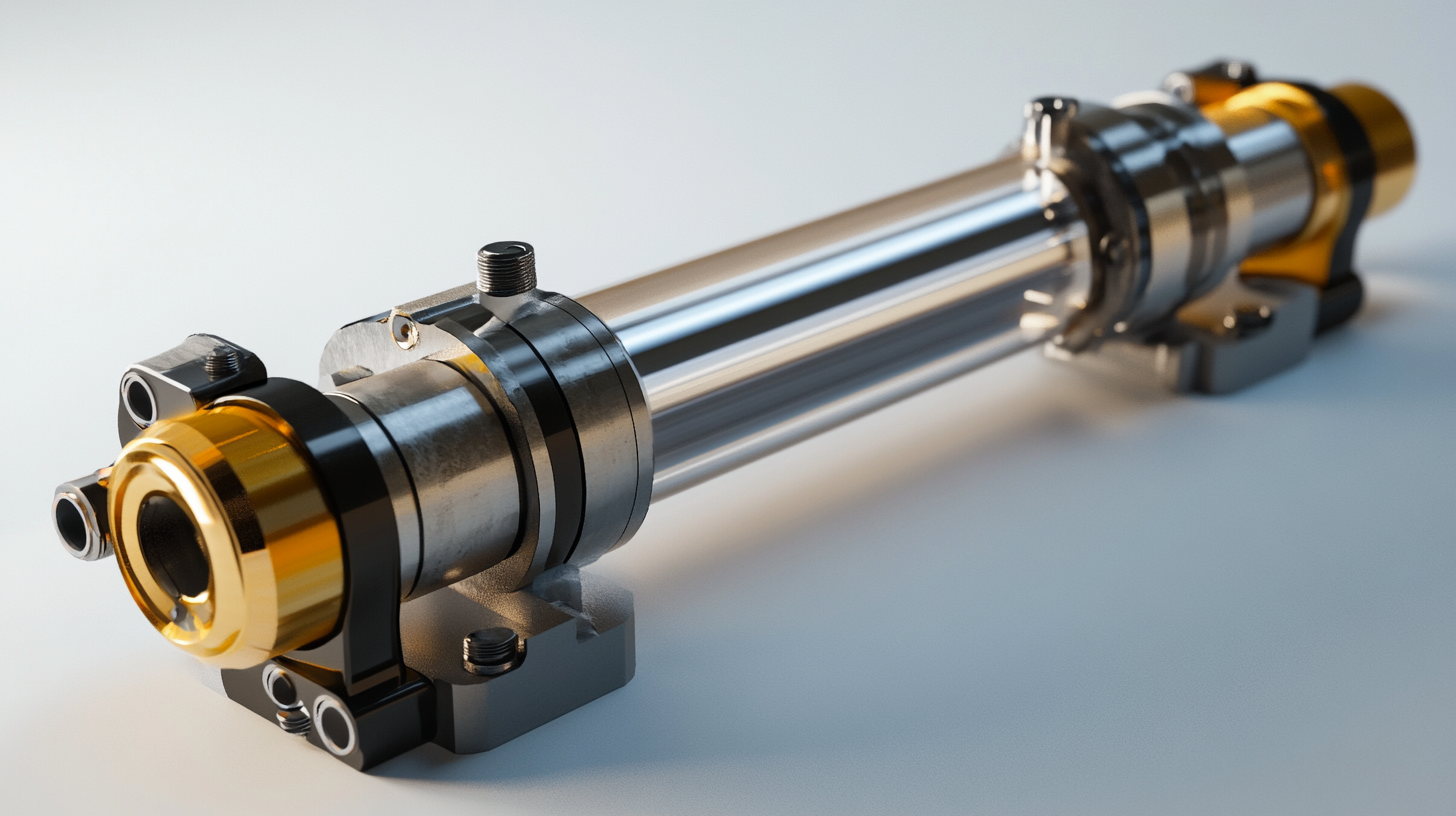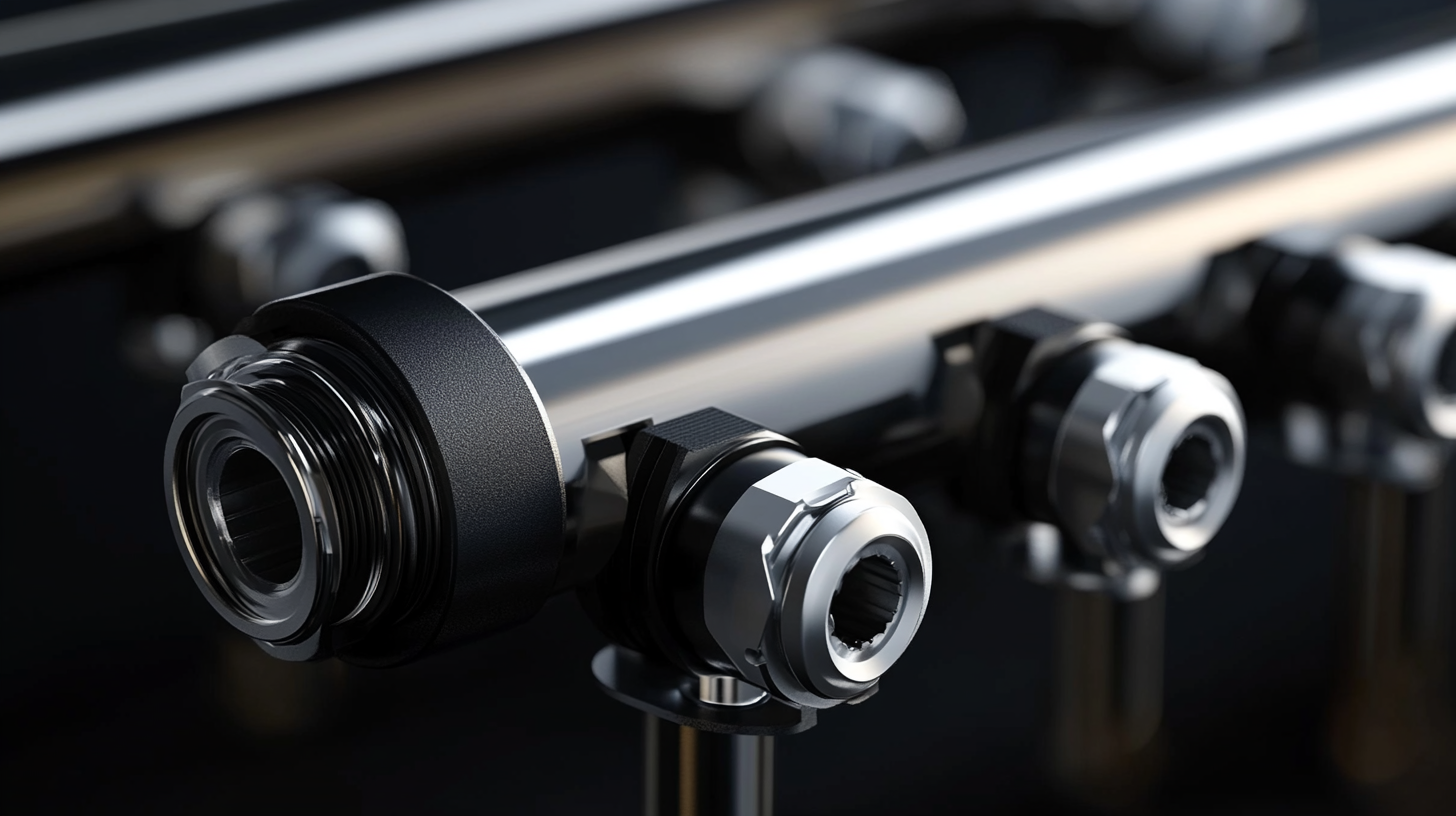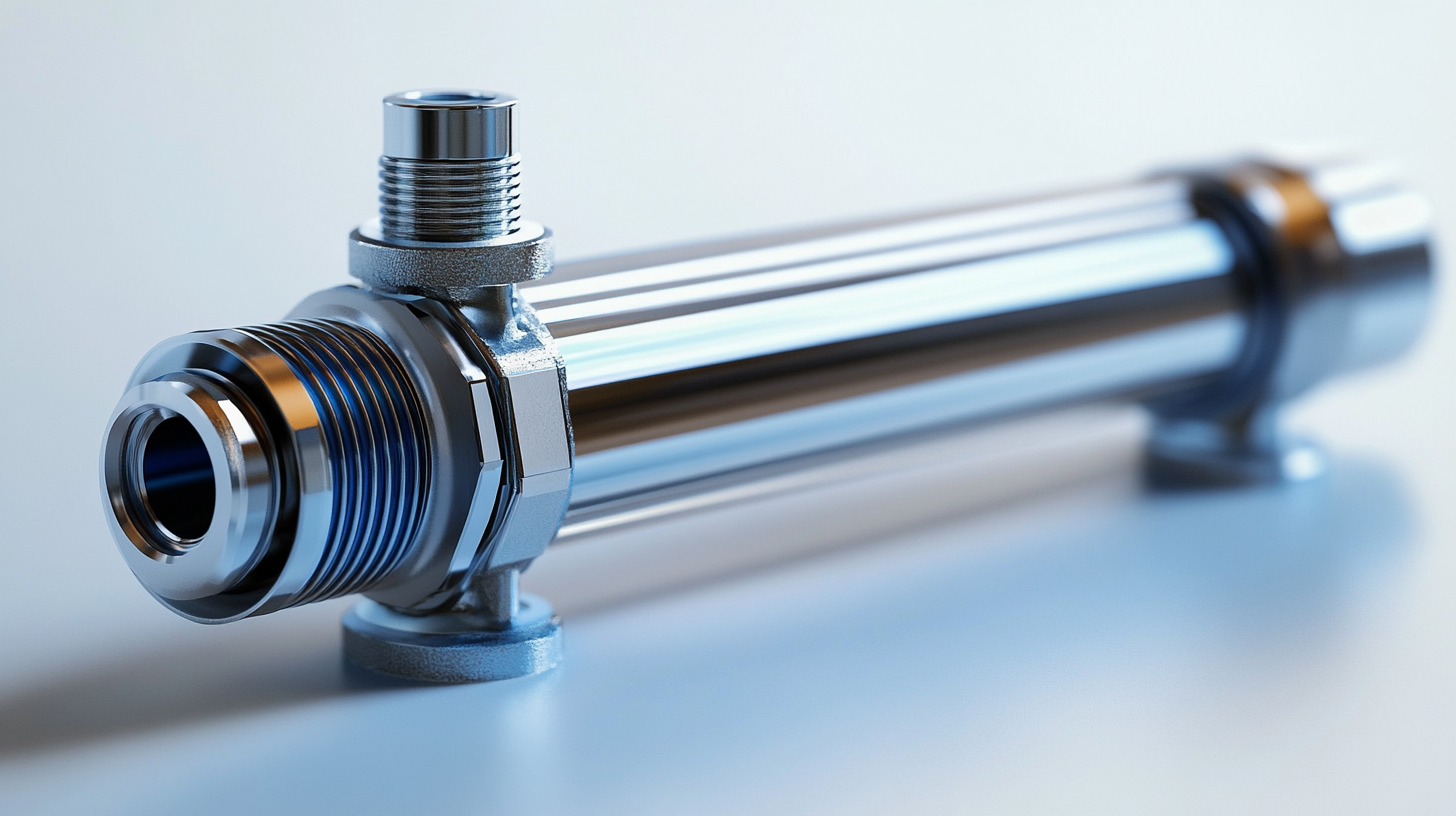International Fluid Power Inc.
International Fluid Power - Innovative Partners For Global Sourcing Of Fluid Power Products. Your Complete Hydraulic Source in SE Minnesota.
INTERNATIONAL FLUID POWER, INC.
The Comprehensive Handbook to Designing Your Own Custom Hydraulic Cylinders
In the rapidly evolving landscape of industrial machinery, the demand for Custom Hydraulic Cylinders continues to grow exponentially. According to a recent market report by Research and Markets, the global hydraulic cylinders market is poised to reach an estimated value of USD 5.6 billion by 2025, with a significant portion attributed to the customization trend. Industries ranging from construction and aerospace to agriculture are increasingly recognizing the necessity for tailored hydraulic solutions that enhance efficiency and meet specific operational requirements. This growing trend underscores the importance of understanding the intricacies involved in designing custom hydraulic cylinders.
Designing Custom Hydraulic Cylinders is not merely about functionality; it involves a deep understanding of various engineering principles, materials, and manufacturing processes. The 2022 Global Hydraulic Cylinder Market Analysis indicates that 60% of professionals believe that customized solutions lead to improved performance and reliability in their applications. With this substantial backing, it becomes imperative for engineers and manufacturers to explore the best practices in designing hydraulic cylinders that truly meet the unique demands of their projects. This comprehensive handbook aims to equip you with the knowledge and tools necessary to successfully navigate the complexities of creating your own custom hydraulic cylinders.

Understanding the Basics of Hydraulic Cylinder Design
Understanding the basics of hydraulic cylinder design is crucial for anyone looking to create custom hydraulic solutions. At its core, a hydraulic cylinder operates on fundamental principles of fluid mechanics, converting hydraulic energy into mechanical motion. This process typically involves the movement of a piston within a cylinder, where pressurized fluid drives the piston forward or backward. By mastering these basics, designers can tailor cylinders to meet specific requirements, optimizing size, stroke length, and load capacity to suit various applications. Recent advancements in technology, particularly in the realm of humanoid robotics, have significantly influenced hydraulic cylinder development. The research and experimentation involved in creating lifelike robotic movements necessitate innovative actuator designs that blend hydraulic power with responsive control systems. This synergy has led to improvements not only in hydraulic cylinders but also in the associated servo valves that control fluid flow. These developments highlight the importance of integrating advanced engineering principles with fundamental hydraulic knowledge to achieve more efficient and responsive designs. Furthermore, the principles underlying hydraulic systems have found parallels in the automotive industry, particularly in the braking systems of electric vehicles (EVs) and internal combustion engine (ICE) vehicles. Both types of vehicles utilize similar hydraulic technologies, emphasizing the versatility of hydraulic systems across diverse applications. Understanding these foundational elements enables engineers to push the boundaries of what is possible in hydraulic cylinder design, forging a path toward more innovative and effective solutions in multiple fields.

Key Components and Materials for Custom Hydraulic Cylinders
When designing custom hydraulic cylinders, understanding the key components and materials is essential for ensuring performance and durability, especially in harsh environments like those faced by wind turbines. Modern advancements have introduced high-tech solutions that protect hydraulic cylinders, thereby minimizing maintenance and downtime. Utilizing corrosion-resistant materials and properly designed seals can significantly enhance the longevity of these cylinders, making them better suited for challenging operational conditions.
The market for hydraulic equipment is expanding, with forecasts suggesting a substantial growth trajectory. Custom hydraulic cylinders are at the forefront of this expansion, driven by increased demand across various sectors, including industrial machinery and renewable energy. Manufacturers are focusing on creating high-precision, made-to-order components to meet the unique needs of their clients, enabling them to optimize performance and reliability.
Moreover, innovations in stress monitoring techniques for hydraulic columns are paving the way for improved safety and performance in critical applications like mining. With real-time monitoring systems, operators can ensure that the hydraulic columns maintain integrity throughout their usage. As the industry evolves, the integration of advanced materials and tailored components will continue to play a crucial role in the design and functionality of custom hydraulic cylinders, ultimately driving their value and market share in the coming years.

Design Considerations: Sizing, Pressure Ratings, and Stroke Length
When designing custom hydraulic cylinders, attention to sizing, pressure ratings, and stroke length is crucial for ensuring optimal performance. The size of hydraulic components can significantly influence their functionality. Just as using the wrong cuff size can lead to inaccurate blood pressure readings, incorrect sizing of hydraulic cylinders may result in inefficiencies or failure under pressure. According to the American Hydraulic Association, improper sizing can lead to performance reductions of up to 30%, potentially jeopardizing the safety and efficiency of hydraulic systems.
Pressure ratings, another key consideration in hydraulic cylinder design, must align with the operational demands of the system. Research indicates that cylinders operated at pressures exceeding their ratings can experience catastrophic failures. A systematic review in the Journal of Hydraulic Research emphasizes that ensuring compliance with manufacturer specifications for pressure ratings is essential. For instance, hydraulic cylinders used in heavy machinery often require a pressure rating of 2500 PSI or more, underscoring the need for rigorous design and testing protocols.
Stroke length also plays a pivotal role in the functionality of hydraulic cylinders. Just as anatomical variations in vascular diameters necessitate tailored approaches in neurovascular models, stroke length must be customized to the specific applications of hydraulic cylinders. The Hydraulic Institute recommends conducting thorough assessments of application requirements to define optimal stroke lengths, which directly impact the motion range and operational efficiency. By considering these design factors, manufacturers can achieve precise and reliable hydraulic systems tailored to their operational needs.

The Manufacturing Process: From Prototype to Production
In the journey from prototype to production, understanding the manufacturing processes is crucial for designing custom hydraulic cylinders effectively. Three primary production methods stand out: make to stock (MTS), make to order (MTO), and make to assemble (MTA). Each of these approaches offers unique advantages depending on the project’s requirements. For instance, MTS is suited for high-demand products, allowing manufacturers to keep stock on hand, while MTO offers customizable solutions tailored to specific client needs but may result in longer lead times.
Moreover, recent advancements in additive manufacturing have revolutionized the prototyping phase. Techniques such as 3D printing are no longer limited to just initial models; they are now being used for large-scale production as well. This transition supports rapid iteration and can significantly reduce production costs. New trends show that businesses are increasingly adopting these technologies, facilitating a smoother transition from concepts to tangible products.
As industries continue to innovate, the importance of integrating prototypes into the production process cannot be understated. By leveraging modern techniques and understanding the varying production types, companies can improve efficiency and product quality. The evolution of manufacturing processes, bolstered by technologies like 3D printing, is reshaping how custom hydraulic cylinders and other products are developed and brought to market.
Testing and Quality Assurance for Custom Hydraulic Cylinders
Testing and quality assurance are critical components in the design and manufacturing process of custom hydraulic cylinders. Research indicates that about 20% of hydraulic system failures are attributed to substandard components, a statistic that emphasizes the necessity for rigorous testing protocols. Implementing standardized tests, such as hydrostatic and pneumatic testing, ensures that cylinders can withstand the pressures they will encounter in real-world applications. According to a report by the International Fluid Power Society, conducting these tests can improve the reliability of hydraulic systems by up to 30%.
In addition to pressure testing, quality assurance incorporates various inspection methods, including dimensional accuracy checks and material verification. Statistical Process Control (SPC) is increasingly used in the hydraulic cylinder manufacturing industry to monitor the production process continuously. By utilizing SPC, manufacturers can reduce variability and defects in their products, leading to a more consistent output. Recent findings from the Hydraulic Institute reveal that companies employing comprehensive quality assurance measures experience a 25% increase in customer satisfaction ratings, demonstrating the tangible benefits of prioritizing quality in hydraulic cylinder design.
Moreover, advanced technologies such as non-destructive testing (NDT) and automated inspection equipment are transforming quality assurance in hydraulic cylinder production. Techniques like ultrasonic testing and magnetic particle inspection allow for real-time analysis of material integrity without damaging the components. Reports indicate that these innovations not only enhance product safety but also reduce the time spent on quality checks by 40%, streamlining the entire manufacturing process. By integrating robust testing and quality assurance measures, manufacturers can ensure that their custom hydraulic cylinders meet the highest industry standards, ultimately protecting both their investments and their end users.
You Can Find International Fluid Power Here:
Search For:
Footer #4 Widget
This is an example of a widget area that you can place text to describe a product or service. You can also use other WordPress widgets such as recent posts, recent comments, a tag cloud or more.
© 2025 International Fluid Power, Inc. All Right Reserved.
